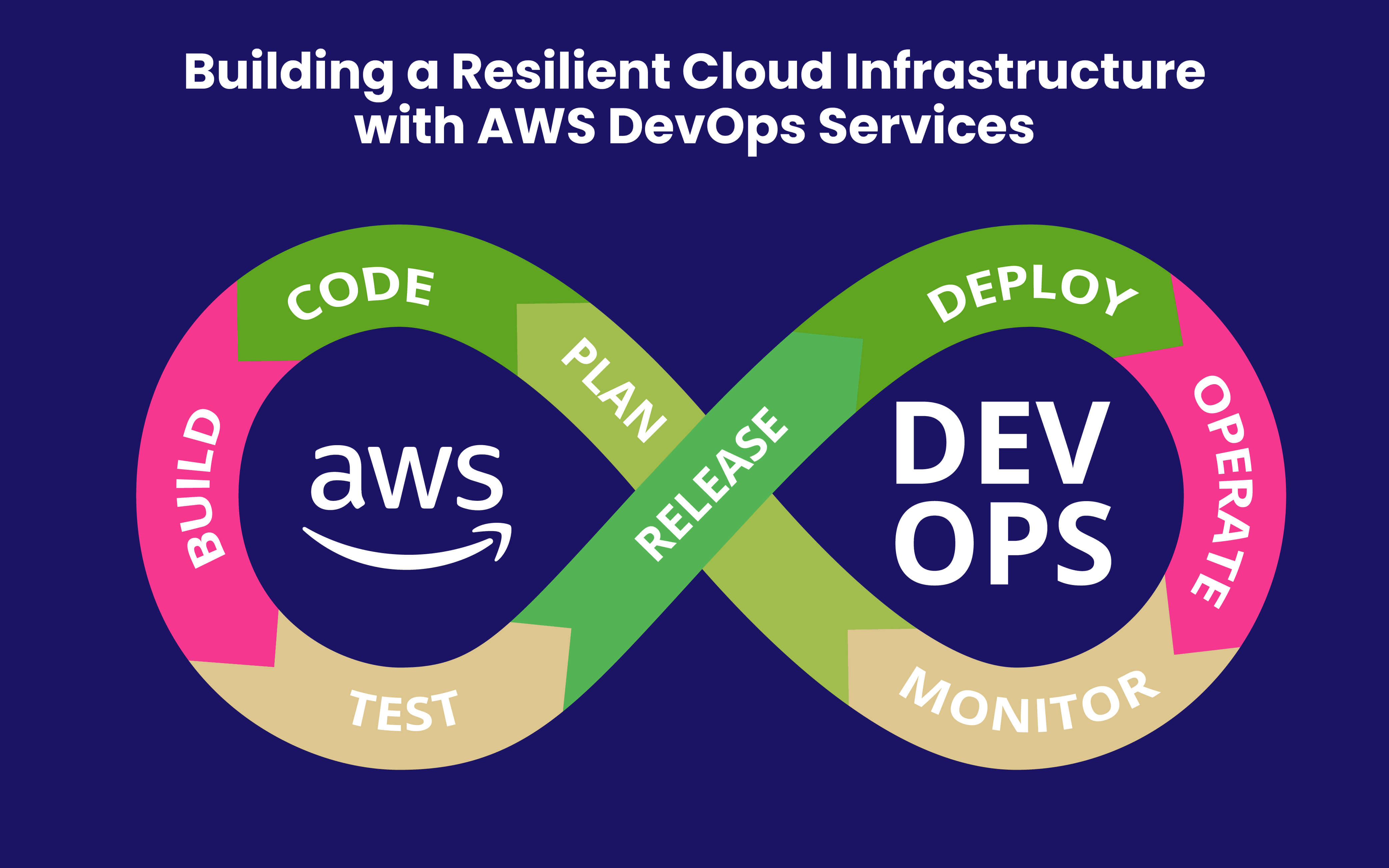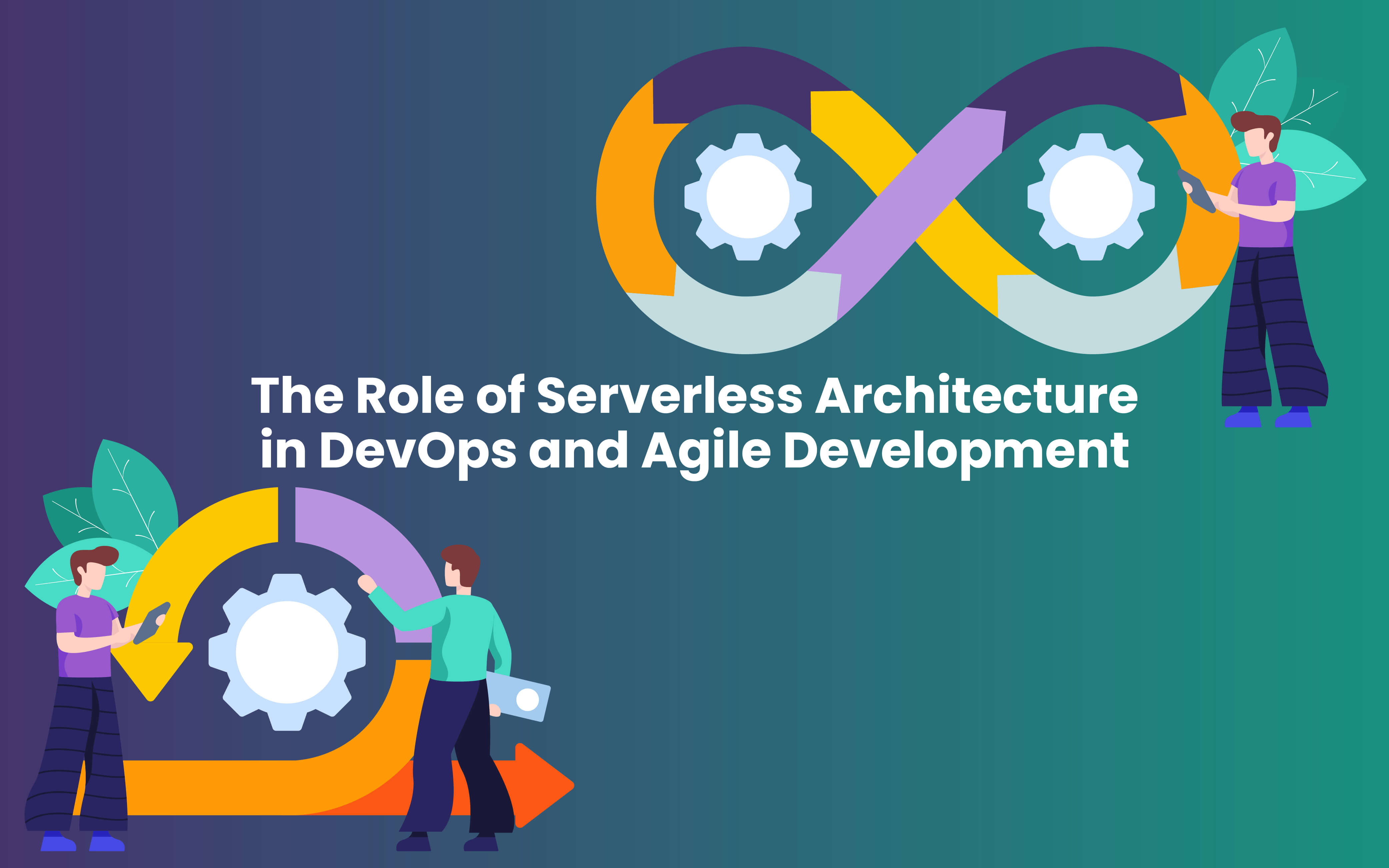Blogs
To know about all things Digitisation and Innovation read our blogs here.
AWS DevOps Services
Building a Resilient Cloud Infrastructure with AWS DevOps Services
SID Global Solutions
20 March 2023

Cloud infrastructure has become an essential part of modern IT infrastructure. It enables organizations to build, manage, and deploy applications and services with agility and efficiency. However, building a resilient cloud infrastructure that can withstand failures and disruptions is not an easy task. AWS DevOps Services provides a suite of tools and best practices that can help organizations build a resilient cloud infrastructure. In this guide, we will discuss the key strategies and techniques for building a resilient cloud infrastructure with AWS DevOps Services.
What is a Resilient Cloud Infrastructure?
A resilient cloud infrastructure is an infrastructure that can withstand failures and disruptions. It is designed to ensure that applications and services remain available and performant even in the face of failures and disruptions. A resilient cloud infrastructure typically consists of the following components:
- High Availability: A resilient cloud infrastructure is designed to ensure that applications and services are always available. It typically involves deploying applications and services across multiple availability zones or regions.
- Disaster Recovery: A resilient cloud infrastructure is designed to recover from disasters quickly. It typically involves creating backup copies of data and applications and replicating them across multiple regions.
- Fault Tolerance: A resilient cloud infrastructure is designed to ensure that applications and services continue to function even in the face of failures. It typically involves deploying redundant systems and using load balancers to distribute traffic.
Also Read: How to Use Kubernetes to Automate Your DevOps Pipeline?
Key Strategies for Building a Resilient Cloud Infrastructure with AWS DevOps Services
- Multi-Availability Zone Deployment: One of the key strategies for building a resilient cloud infrastructure is to deploy applications and services across multiple availability zones (AZs). AWS DevOps Services enables organizations to deploy applications and services across multiple AZs using load balancers and auto-scaling groups. This ensures that applications and services remain available even in the face of AZ failures.
- Disaster Recovery: Another key strategy for building a resilient cloud infrastructure is to have a disaster recovery plan in place. AWS DevOps Services provides several tools and services for disaster recovery, including Amazon S3 for backup and restore, AWS Backup for centralized backup management, and AWS CloudFormation for infrastructure automation. These tools and services enable organizations to create backup copies of data and applications and replicate them across multiple regions.
- Redundancy and Load Balancing: Redundancy and load balancing are critical components of a resilient cloud infrastructure. AWS DevOps Services provides several tools and services for redundancy and load balancing, including Amazon EC2 Auto Scaling for automatically scaling resources based on demand, Amazon Route 53 for DNS management and routing, and Elastic Load Balancing for distributing traffic across multiple instances. These tools and services enable organizations to deploy redundant systems and distribute traffic across multiple instances, ensuring that applications and services remain available and performant even in the face of failures.
- Monitoring and Alerting: Monitoring and alerting are essential components of a resilient cloud infrastructure. AWS DevOps Services provides several tools and services for monitoring and alerting, including Amazon CloudWatch for monitoring and logging, AWS CloudTrail for auditing and compliance, and AWS Config for resource inventory and configuration management. These tools and services enable organizations to monitor and analyze their cloud infrastructure, identify potential issues and failures, and take proactive measures to prevent disruptions.
- Infrastructure-as-Code: Infrastructure-as-code (IaC) is a critical component of building a resilient cloud infrastructure. AWS DevOps Services provides several tools and services for IaC, including AWS CloudFormation for infrastructure automation, AWS CodeDeploy for deployment automation, and AWS CodePipeline for continuous delivery. These tools and services enable organizations to define, test, and deploy their infrastructure as code, ensuring that their infrastructure is consistent, repeatable, and easy to manage.
Also Read: How Digital Transformation is Shaping the Future of Customer Experience?
Best Practices for Building a Resilient Cloud Infrastructure with AWS DevOps Services
Use AWS Multi-Availability Zone (Multi-AZ) Architecture: One of the best practices for building a resilient cloud infrastructure is to deploy your applications and services across multiple availability zones (AZs). This ensures that your applications and services remain available even if an entire AZ fails. AWS provides the Multi-AZ architecture that enables you to deploy your applications and services in multiple AZs, automatically balancing the load between them.
Use AWS Auto Scaling: Another best practice for building a resilient cloud infrastructure is to use AWS Auto Scaling. Auto Scaling enables you to automatically adjust the capacity of your resources based on demand. This means that you can scale up or down depending on the traffic or resource usage, ensuring that you have the right resources to handle your workload. By using AWS Auto Scaling, you can ensure that your applications and services remain available and performant, even in the face of sudden spikes in traffic or resource usage.
Use AWS Backup: AWS Backup is a centralized backup management service that enables you to automate and streamline your backup and recovery processes. By using AWS Backup, you can create backup policies for your resources, manage backup schedules, and restore your data and applications quickly in the event of a disaster or failure. AWS Backup supports multiple AWS services, including Amazon EBS, Amazon RDS, Amazon DynamoDB, and Amazon EFS, ensuring that you can protect your data and applications across your entire infrastructure.
Use AWS CloudFormation: AWS CloudFormation is a service that enables you to create and manage your AWS infrastructure as code. By using AWS CloudFormation, you can define your infrastructure as a template, test it, and deploy it in a repeatable and consistent way. This ensures that your infrastructure is always up-to-date, and you can roll back to previous versions if necessary. By using AWS CloudFormation, you can ensure that your infrastructure is consistent, repeatable, and easy to manage, reducing the risk of configuration errors and improving your overall infrastructure resilience.
Use AWS CloudTrail: AWS CloudTrail is a service that enables you to log, monitor, and retain events related to your AWS infrastructure. By using AWS CloudTrail, you can monitor API calls, detect security anomalies, and troubleshoot operational issues. AWS CloudTrail provides a complete audit trail of all AWS API calls and events, enabling you to identify potential security risks or configuration issues before they become a problem.
Use AWS Config: AWS Config is a service that enables you to inventory and manage your AWS resources, including configurations, relationships, and changes. By using AWS Config, you can track changes to your infrastructure, monitor compliance with security policies, and troubleshoot operational issues. AWS Config provides a complete view of your infrastructure, enabling you to identify potential security risks or configuration issues before they become a problem.
Also Read: Why a Digital Mindset is Critical for Customer-Centric Digital Transformation
Conclusion
Building a resilient cloud infrastructure with AWS DevOps Services requires careful planning and implementation. By following the key strategies and best practices outlined in this guide, organizations can ensure that their cloud infrastructure remains available, performant, and secure, even in the face of failures and disruptions. AWS DevOps Services provides a suite of tools and services that can help organizations automate and streamline their cloud infrastructure management, reducing the risk of errors and improving their overall resilience. With AWS DevOps Services, organizations can build a cloud infrastructure that can meet the demands of modern IT environments, enabling them to innovate and grow with confidence.
SID Global Solutions is a leading provider of AWS DevOps Services that helps clients overcome various digital transformation challenges. One of the biggest challenges faced by organizations today is the need to rapidly scale and innovate their IT infrastructure while maintaining a high level of availability, security, and compliance. SID Global Solutions addresses these challenges by leveraging AWS DevOps Services to automate and streamline the entire software delivery pipeline, from code to deployment.
We at SIDGS works closely with our clients to understand their specific needs and goals, and then designs and implements customized AWS DevOps Solutions that meet those needs. By using advanced automation tools, such as AWS CloudFormation and AWS CodePipeline, SID Global Solutions can accelerate the software delivery process while reducing errors and improving the overall quality of the code. Additionally, SID Global Solutions provides ongoing support and maintenance services to ensure that clients can continue to innovate and grow their infrastructure with confidence. We are committed to helping our clients leverage the power of AWS DevOps Services to overcome the digital transformation challenges and achieve their business objectives.









